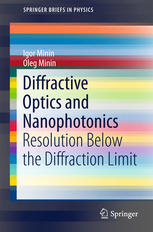

Most ebook files are in PDF format, so you can easily read them using various software such as Foxit Reader or directly on the Google Chrome browser.
Some ebook files are released by publishers in other formats such as .awz, .mobi, .epub, .fb2, etc. You may need to install specific software to read these formats on mobile/PC, such as Calibre.
Please read the tutorial at this link: https://ebookbell.com/faq
We offer FREE conversion to the popular formats you request; however, this may take some time. Therefore, right after payment, please email us, and we will try to provide the service as quickly as possible.
For some exceptional file formats or broken links (if any), please refrain from opening any disputes. Instead, email us first, and we will try to assist within a maximum of 6 hours.
EbookBell Team

4.4
42 reviewsIn this book the authors present several examples of techniques used to overcome the Abby diffraction limit using flat and 3D diffractive optical elements, photonic crystal lenses, photonic jets, and surface plasmon diffractive optics. The structures discussed can be used in the microwave and THz range and also as scaled models for optical frequencies. Such nano-optical microlenses can be integrated, for example, into existing semiconductor heterostructure platforms for next-generation optoelectronic applications.
Chapter 1 considers flat diffractive lenses and innovative 3D radiating structures including a conical millimeter-wave Fresnel zone plate (FZP) lens proposed for subwavelength focusing. In chapter 2 the subwavelength focusing properties of diffractive photonic crystal lenses are considered and it is shown that at least three different types of photonic crystal lens are possible.
With the aim of achieving subwavelength focusing, in chapter 3 an alternative mechanism to produce photonic jets at Terahertz frequencies (terajets) using 3D dielectric particles of arbitrary size (cuboids) is considered. A scheme to create a 2D “teraknife” using dielectric rods is also discussed. In the final chapter the successful adaptation of free-space 3D binary phase-reversal conical FZPs for operation on surface plasmon-polariton (SPP) waves demonstrates that analogues of Fourier diffractive components can be developed for in-plane SPP 3D optics.